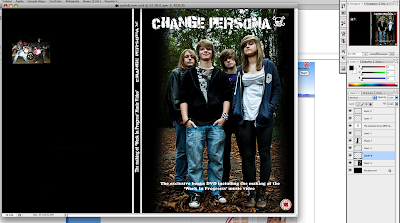4. How did you use media technologies in the construction and research, planning and evaluation stages?
I feel that we used a lot of different media technologies in the construction and research, planning and evaluation stages. The many technologies we used consist of:
Our group blog
The internet
YouTube (Online video websites)
Filming equipment
Final Cut Pro, Photoshop and AppleMacs
Focus Group
Our Group Blog
Our group blog was one important aspect of constructing (mostly) our theory work. Although there are a small number of video reviews and ideas within, the majority is theory work about our music video. We used this to keep together all of our work in a suitable way for all to see. Many of our posts are about planning the whole event. This includes a shooting schedule, storyline, equipment/prop list and focus group video.
The Internet and Online Video Websites
For our video to be successful, we needed to see as many exmaples of other band videos within a rock genre as possible to gain many ideas for our own music video. This helped us plan what we were going to do and what to expect when filming and editing. An exmaple of what we did was going to YouTube to search rock bands and watch the videos. This helped us greatly to gain ideas and see videos in a video maker's prospective. Also, YouTube is a great way of getting feedback from viewers on our music video.
Filming Equipment
The filming equipment we used constructed the video itself. We used HD Camcorders to film our videos in high definition and carry out our recording of the video. These cameras are better than the older generation as we can now watch the clips we have recorded on set, and not have to go back and watch the whole thing, then go back and record again if there is anything to re-record. We also used a second Camcorder to get the same scenes we filmed from a different prospective at the same time for more clips to use while editing.
Final Cut Pro, Photoshop and AppleMacs
When the filming was finished, we needed to edit and customise individual clips to make the video a high quality and unique one. Final Cut Pro was the main software we used to edit our clips together and create the music video, while using its many features such as cutting, adding effects, filters, snapping clips together, etc. Photoshop was also used to create our album covers for the finished music video. All of this has been developed and carried out on AppleMacs which, in my opinion, is a great computer to edit videos in as it has quality software.
Focus Group
Filming the focus group with HD Camcorders was something that helped us evaluate our finished product. We uploaded it to the AppleMac and went through it, while listening to what other people had to say, giving us feedback of what they thought about our finished version. This was also uploaded to our blog. The focus group is something that we can watch again and again for feedback while seeing the reactions of the group volunteers, and not just reading off of paper.
To conclude, I feel that we used a lot of different media technologies. These individual technologies has greatly helped us in finalising our music video, while keeping a record of our theory work through the use of blogs and camera equipment. These have definately played a part in completing our task of creating a successful music video.





